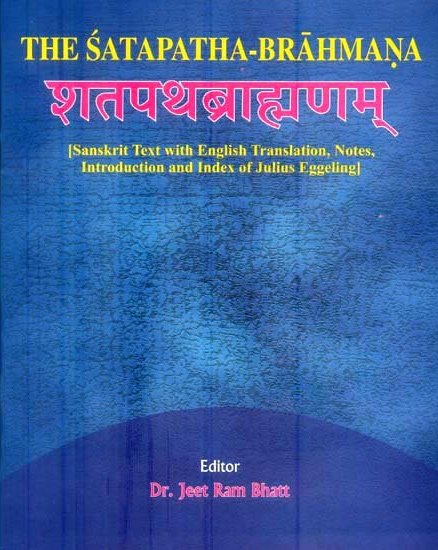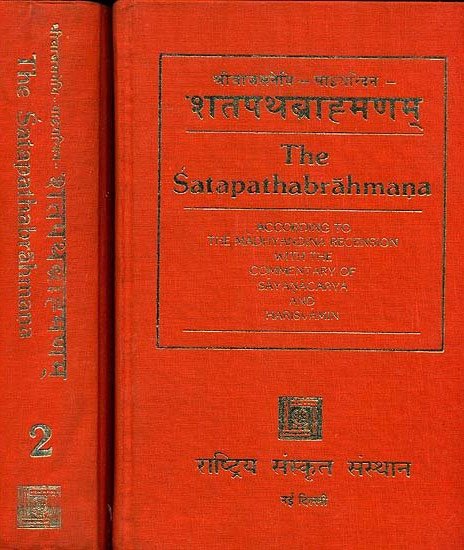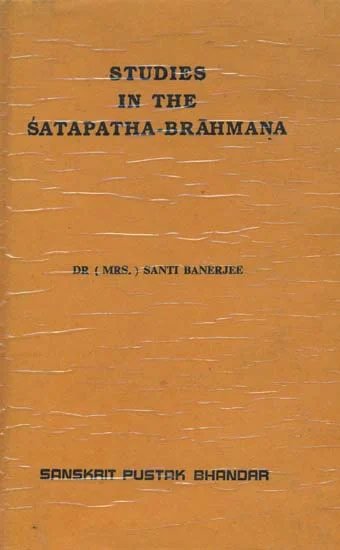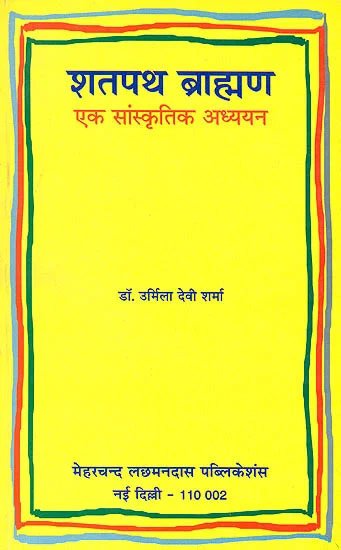Satapatha-brahmana [sanskrit]
147,532 words | ISBN-10: 812080113X | ISBN-13: 9788120801134
The Sanskrit text of the Satapatha-brahmana: One of the largest works in the category of Vedic (Brahmaic) literature, narrating in extensive detail the various rites, constructions, chants and utensils to be used in Hindu ceremonies. Alternative titles: Śatapathabrāhmaṇa (शतपथब्राह्मण), Śatapatha-brāhmaṇa (शतपथ-ब्राह्मण) Shatapathabrahma (shatapatha).
Verse 6.7.2.6
suparṇo'si garutmāniti | vīryaṃ vai suparṇo garutmānvīryamevainametadabhisaṃskaroti trivṛtte śira iti trivṛtamasya stomaṃ śiraḥ karoti gāyatraṃ cakṣuriti gāyatraṃ cakṣuḥ karoti bṛhadrathantare pakṣāviti bṛhadrathantare pakṣau karoti stoma ātmeti stomamātmānaṃ karoti pañcaviṃśaṃ candāṃsyaṅgānīti candāṃsi vā etasyāṅgāni yajūṃṣi nāmeti yadenamagnirityācakṣate tadasya yajūṃṣi nāma sāma te tanūrvāmadevyamityātmā vai tanūrātmā te tanūrvāmadevyamityetadyajñāyajñiyam pucamiti yajñāyajñiyam pucaṃ karoti dhiṣṇyāḥ śaphā iti dhiṣṇayirvā eṣo'smiṃloke pratiṣṭhitaḥ suparṇo'si garutmāndivaṃ gaca svaḥ pateti tadenaṃ suparṇaṃ garutmantaṃ kṛtvāha devāngaca svargaṃ lokam pateti
Preview of English translation:
6. [Vajasaneyi Samhita XII, 4] “A well-winged bird thou art!”—the well-winged bird means vigour: he thus forms him so as to be (endowed with) vigour;—“the Trivrit is thy head,”—he thus makes the Trivrit stoma (nine-versed hymn) his head;—“the Gayatra thine eye,”—he thus makes the Gayatri metre his eye;—“the Brihat and Rathantara thy wings,”—he thus makes the Brihat and Rathantara (hymn-tunes) his wings;—“the hymn is the self,”—the Pancavimsha stoma (twenty-five-versed hymn) he makes the self (soul, or body);—“the metres the limbs,”—for the metres are indeed his (Agni's) limbs;—“the prayers his name,”—the prayers (yajus) are his name 'Agni' by which they call him,—“the Vamadevya saman is thy body,”—the body, doubtless, is the self: thus 'the Vamadevya (hymn-tune) is thy body, thy self; 'the Yajnayajniya thy tail,'—he thus makes the Yajnayajniya his tail;—“the hearths thy hoofs,”—by means of the hearths he (Agni) is indeed established in this world;—“thou art a well-winged bird: go to the heaven! fly to the light!”—thus having made him a well-winged, bird he says, 'Go to the gods! fly to the heavenly world!
For a detailled translation, including proper diacritics and footnotes, go the full English translation.
Other editions:
Also see the following editions of the Sanskrit text or (alternative) English translations of the Satapatha-brahmana Verse 6.7.2.6
The Satapatha Brahmana (In Five Volumes)
by Julius Eggeling (1882)
2551 pages; [Publisher: Motilal Banarsidass Publishers Pvt. Ltd.]
Buy now!
The Satapatha Brahmana (3 volumes)
by Dr Jeet Ram Bhatt (2009)
Sanskrit Text with English Translation; 1726 pages; [Publisher: Eastern Book Linkers]; ISBN: 9788178541693
Buy now!
The Satapatha Brahmana (With The Commentary of Sayanacarya and Harisvamin)
by Rashtriya Sanskrit Sansthan (2002)
3483 pages; [शतपथ ब्राह्मणम्] According to the Madhyandina Recension; Commetaries: (1) Vedarthaprakash (Vedartha-prakasha) by Shrimat-Trayibhashyakar Sayanacharya, (2) Sarvavidyanidhana Kavindracharya Saraswati.
Buy now!
Studies in the Satapatha-Brahmana
by Dr. (Mrs.) Santi Banerjee (1993)
236 pages; [Publisher: Sanskrit Pustak Bhandar]
Buy now!
Cultural Study of the Satapatha Brahman (in Hindi)
by Dr. Urmila Devi Sharma (1982)
106 pages; Shatapatha Brahmana Ek Sanskritik Adhyan; [Publisher: Meharchand Lakshmandas Publications]
Buy now!![Satapatha-brahmana [sanskrit] - book cover](/uploads/a/NAC457-Satapatha-Brahmana.jpg)



